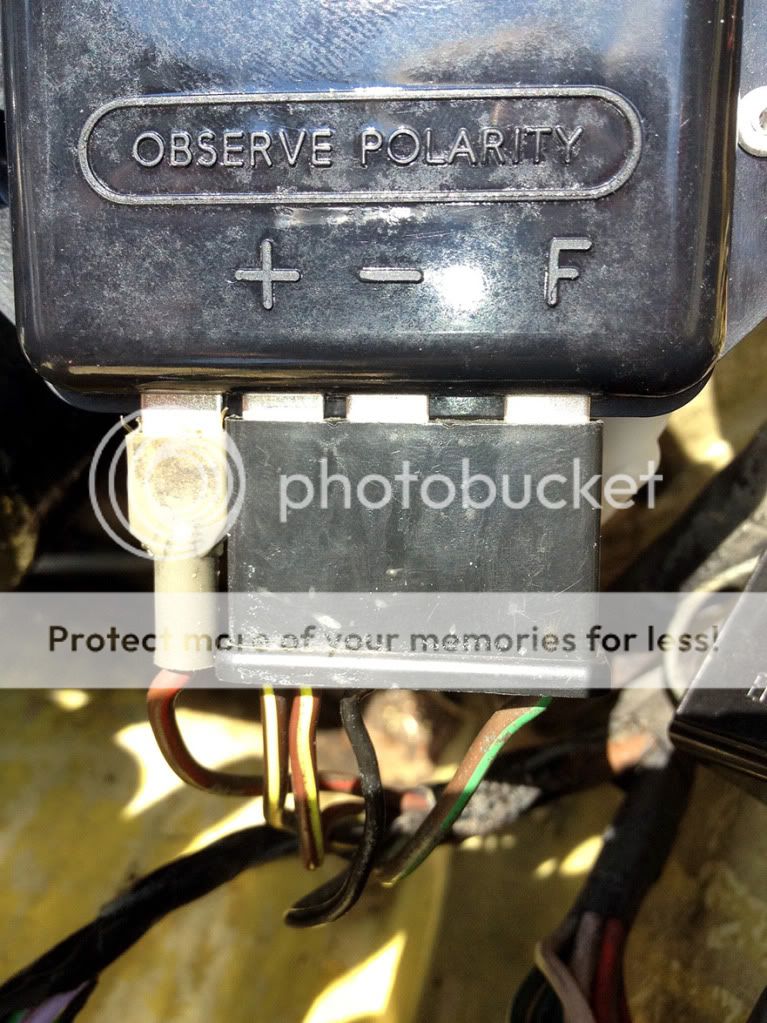My alternator warning light glows whenever my battery is connected. This is with the ignition switch in the verticle/key out position.
When I turn the key to the IGN position, where one <span style="font-style: italic"> </span> should <span style="font-style: italic"> </span> see the ALT warning lamp illuminate, mine turns off and stays off when I rotate the switch further to the start position. Other warning lights, brake and oil pressure, that illuminate with the key in this position work as they should.
The only way I can make the alternator warning light turn off is to either disconnect the battery each time I park the car or unplug the white wire at the back of the ignition switch which leads to the lamp.
Now with the white wire at the ignition switch disconnected, I have confirmed that I have power at this wire when the battery is connected and switch is to verticle/key out. I'm thinking this should not be the case.
Alternator (original Lucas 15AC) has recently been rebuilt and re-bench tested, to be certain, just last week. All wiring is correct to the regulator, ie: IND (NY) and F- (NG)leads to their correct location on the regulator. The regulator is also new (makes no difference which one I have connected, old or new, in concerns to this issue).
Any ideas? This is my last electrical issue and I'm so eager to put it behind me!
When I turn the key to the IGN position, where one <span style="font-style: italic"> </span> should <span style="font-style: italic"> </span> see the ALT warning lamp illuminate, mine turns off and stays off when I rotate the switch further to the start position. Other warning lights, brake and oil pressure, that illuminate with the key in this position work as they should.
The only way I can make the alternator warning light turn off is to either disconnect the battery each time I park the car or unplug the white wire at the back of the ignition switch which leads to the lamp.
Now with the white wire at the ignition switch disconnected, I have confirmed that I have power at this wire when the battery is connected and switch is to verticle/key out. I'm thinking this should not be the case.
Alternator (original Lucas 15AC) has recently been rebuilt and re-bench tested, to be certain, just last week. All wiring is correct to the regulator, ie: IND (NY) and F- (NG)leads to their correct location on the regulator. The regulator is also new (makes no difference which one I have connected, old or new, in concerns to this issue).
Any ideas? This is my last electrical issue and I'm so eager to put it behind me!

 Hey Guest!
Hey Guest!
 smilie in place of the real @
smilie in place of the real @
 Pretty Please - add it to our Events forum(s) and add to the calendar! >>
Pretty Please - add it to our Events forum(s) and add to the calendar! >> 






 A friendly reminder - be careful what links you click on here. If a link is posted by someone you don't know, or the URL looks fishy, DON'T CLICK. Spammers sometimes post links that lead to sites that can infect your computer, so be mindful what you click.
A friendly reminder - be careful what links you click on here. If a link is posted by someone you don't know, or the URL looks fishy, DON'T CLICK. Spammers sometimes post links that lead to sites that can infect your computer, so be mindful what you click.